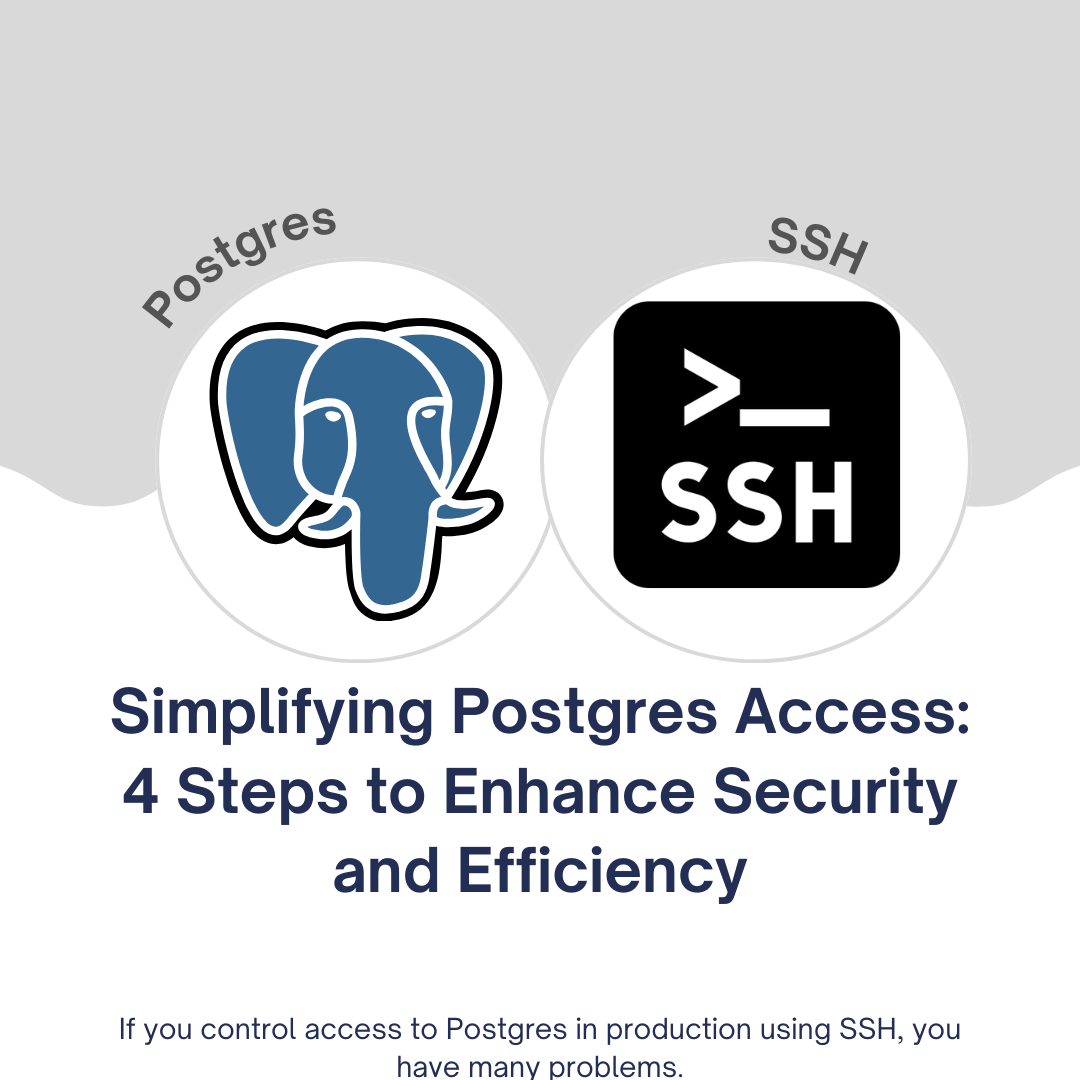Simplifying Postgres Access: 4 Steps to Enhance Security and Efficiency

If you're responsible for managing Postgres in a production environment using SSH access, you might be facing some common problems. In this article, we'll delve into the five most significant challenges posed by this approach, explore their consequences, and offer practical solutions to mitigate their impact. We'll also discuss how you can gradually improve your Postgres access management to enhance security and efficiency.
The Challenge of Fast Access in Production
Access to Postgres in a production environment is crucial for ensuring the speed and reliability of your products. Whether it's troubleshooting, bug fixes, or incident resolutions, your ability to access data swiftly can make or break your operational efficiency.
However, many teams rely on suboptimal solutions for granting access to Postgres, which can lead to significant security risks and hinder workflows. Let's examine the five main problems and how to address them.
The Five Biggest Problems
- Building Infrastructure for Postgres SSH Access is Painful: Managing Postgres access through SSH can be cumbersome and time-consuming. The process often lacks essential features and introduces unnecessary complexities.
Hidden Vulnerabilities: Several critical components are often missing from SSH-based access management, which creates hidden vulnerabilities that can be exploited by malicious actors. These include:
- Single Sign-On (SSO) & Multi-Factor Authentication (MFA): Lack of robust authentication methods can compromise security.
- Audit Trials and PII Protection: Failing to record sessions and protect Personally Identifiable Information (PII) leaves you exposed to compliance and security risks.
- Compliance (GDPR, PCI, SOC2, and HIPAA): Inadequate access controls can lead to non-compliance with regulatory requirements.
- Developer Experience: Cumbersome access workflows can hinder developer productivity and efficiency.
Gradual Improvements: The 80/20 Rule
To address these problems effectively, consider adopting a gradual approach that focuses on high-impact areas first. Here are the steps to follow:
1. Add Postgres to Systems You Already Manage
You don't necessarily need to reinvent the wheel. Leverage existing tools and services to simplify Postgres access management:
- If you're using Google Workspaces, you may not need a separate LDAP directory.
- Implementing SSO for SSH and recording Postgres sessions can be challenging, so look for tools that can assist, such as AWS/Google Cloud Cloud Shell solutions or Runops.
Remember, the goal is to streamline access management without introducing unnecessary complexity.
2. Prioritize Features Relevant to Your Industry
Consider your industry's specific needs and requirements when implementing access management improvements:
- If you're in a less regulated industry with a focus on developer experience and fast access, prioritize SSO, MFA, and a streamlined workflow.
- Highly regulated businesses should emphasize security and compliance, even if it means a more complex access process.
The key is to strike the right balance between security and usability based on your industry's demands.
3. Leverage Comprehensive Access Solutions
To reduce complexity and improve overall efficiency, centralize access management for multiple services, not just Postgres:
- Consider using tools that handle access to various resources, including databases, cloud providers, Kubernetes, and servers. For example, Runops can help manage cloud provider access along with other use cases.
A slightly less user-friendly experience across all resources with a single tool is often preferable to managing multiple tools with limited functionality.
4. Add Friction to Unwanted Access Methods
To steer teams away from insecure or non-compliant access methods, consider adding friction to these processes:
- If engineers are using an insecure but fast method for accessing Postgres, introduce a form submission step to incentivize the ideal method. This added step discourages the less secure approach.
- Similarly, if AWS web console access is causing issues, require engineers to submit a Jira request before gaining access. Over time, you can improve the alternative access method to be more efficient than the console.
Remember, the aim is to make the secure method the easiest and most appealing option for your teams.
Conclusion
Managing Postgres access via SSH can present significant challenges and hidden vulnerabilities. However, by following these four steps and focusing on practical solutions, you can gradually improve access management, enhance security, and streamline workflows, ensuring your production environment operates at its best. Don't wait until a security breach occurs—take action now to fortify your Postgres access controls.
